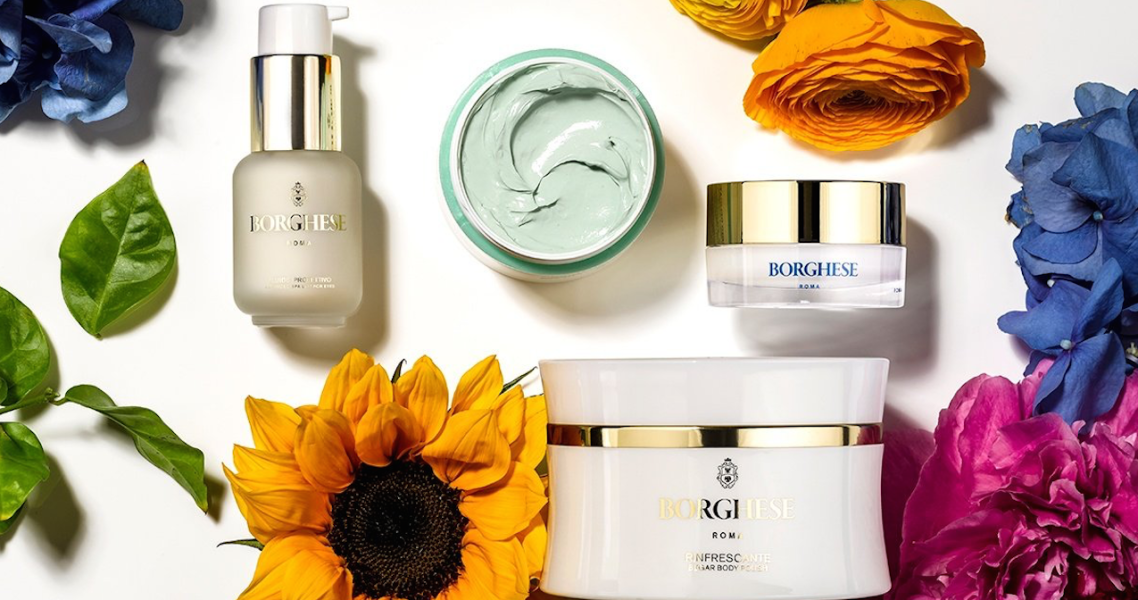After launching a digital campaign in 2018 to target millennials, 63-year-old beauty brand Borghese is retracting its efforts to focus on its core customer: women in their 40s and older.
Beauty companies are increasingly preoccupied with courting millennials and Gen Zers, but Borghese, which is a New York-based brand that touts an aristocratic Italian heritage and mostly focuses on anti-aging, is updating its social media outreach to center on Gen X while debuting anti-aging products.
“Within the last few years, we have done a rebranding to focus on younger customers, [but] our 40-and-older customers have stuck around,” said Adrienne Kaler, Borghese director of marketing and product development. “They were telling us what they were looking for, and we didn’t want to lose them because they are a big part of our audience.” The brand declined to cite growth or sales figures.
Over the last year, Borghese was focusing its attention on Instagram and its ads and social media posts featured lifestyle images instead of being educational, said Kaler. Since January, however, the brand has moved to conducting Facebook Live events bi-monthly and has rejiggered its marketing copy to inform consumers what a product is and what it does, she said.
“Regardless of the product or set of products, the customer wants to know why they need it and how to use it. They don’t want to read between the lines,” said Kaler.
According to social media management platform Hootsuite, 65% of women between 50 and 64 years old are on Facebook. Borghese has had 6,000 viewers on average per FB Live session, said Alexis Hart, Borghese director of content and brand partnerships.
While Borghese frames its millennial-geared campaign last year, titled #OutForMud, as a success, setting out to attract a different customer base is not always fruitful for a brand. There have been notable flops like Estée Edit from Estée Lauder, and Avon’s own attempts have not proved effective, or at least not yet. The Borghese campaign helped the brand show retailers its ability to “engage and connect” with younger people, and also expand into an additional 40 doors in the U.S., said Kaler. In addition, it earned the brand a 219% bump in Instagram impressions (where it has 16,100 followers). The pendulum swing back to older customers demonstrates that a brand cannot solely exist on millennials, especially as a brand with an anti-aging focus, which goes against what younger people want from beauty brands. Millennials represent approximately 25-32% of the brand’s customer base, while Gen X is approximately 68-75%.
Ad position: web_incontent_pos1
Moving forward, Borghesehas been experimenting with Pinterest boards around ingredient stories since June. Thirty-eight percent of Americans between 18 and 49 years old use Pinterest, according to Hootsuite. Borghese will also start publishing videos on YouTube every other week, with a focus on how-to videos, education and commentary from brand ambassadors like 40-year-old Real Housewife Melissa Gorga, said Hart. Much like Facebook, YouTube is also popular with multiple demos, with 85% of Americans between 45 and 54 years old using it, according to Hootsuite.
Older customers also said there were certain products they wanted to see more of or products they wanted the brand to bring back. For example, a hand cream that was discontinued in June 2017 will be brought back in early 2020, with an updated clean formula. Most recently, Borghese collaborated with beauty accessory brand ManiGlovz to create fingerless gloves to protect women’s hands from exposure to the sun. The product launched exclusively on Borghese.com on Monday. Approximately 35% of the brand’s overall sales are online.
“The focus of the industry is on millennials, so this [older] market is being pushed to the side,” said Kaler. “They are looking for attention.”




